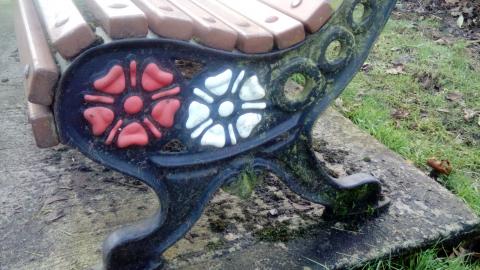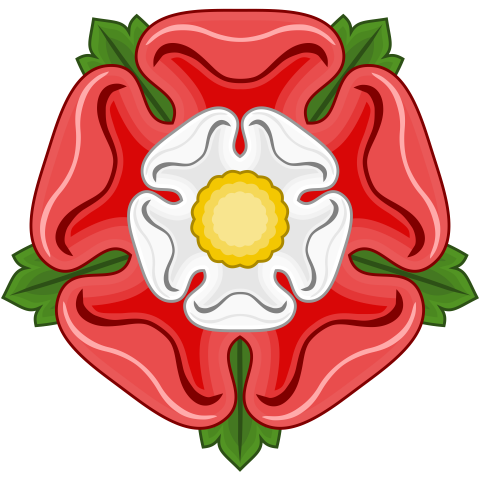A White Rose, a Red Rose, a Lion and a Lamb

Around Barnoldswick, one will see two roses mingled- the red and the white. In 1974, the town was removed from Yorkshire and settled in Lancashire for national boundary changes. There has always been much rivalry between the counties, so the change must have been quite riling for the Yorkshire townsfolk. As a sop to their identity, the town combined the white rose of Yorkshire with the red of Lancashire.
This is a small-scale version of what Henry Tudor did in 1485, combining the red rose of Lancaster with the white rose of York. He, a Lancastrian, married Elizabeth of York, concluding the Cousins’ War, now known as the Wars of the Roses. The resulting motif is the Tudor rose, still a symbol of national life.

Christ Himself combines two images which initially seem to be in opposition to each other. In Revelation 5:5-6 we read:
One of the elders, however, spoke to me. ‘Don’t cry,’ he said. ‘Look! The lion from the tribe of Judah, the Root of David, has won the victory! He can open the scroll and its seven seals. ‘Then I saw in the midst of the throne and of the four living creatures, and in the midst of the elders, a lamb’.
This is a heavenly vision of Christ, described simultaneously as a lion and a lamb. He is a lion on account of His royalty, dignity and awesome power; He is a lamb for He meekly submitted to death to take away the sins of the world.
You will meet this Lamb-Lion; today, as a substitutionary sacrifice who died your death, or later as a Lion who will judge the earth with ferocity and fury.
- Log in to post comments


 Sunday Worship 10.45am & 6.00pm
Sunday Worship 10.45am & 6.00pm